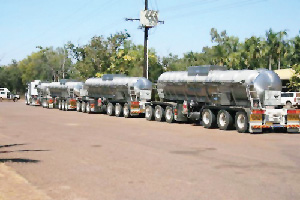
13June 2014
 What Happened?
What Happened?
The interplay between successive low pressure and high pressure cells, as they migrate incessantly from east to west, is the major driver of winter weather patterns over southern Africa. Namibia’s position on the western side of the sub-continent, further contributes to a rather unique set of synoptics, and a marked separation between weather conditions in the south-west, and in the north-east.
This separation line is known as a convergence line. It is defined by the area where the dominant south-westerly airflow, at surface level, confronts the reciprocating airflow from the north. The other winter dynamic is the succession of cold fronts, which are usually carried by a complex cyclonic circulation, marked by a low pressure core where barometric pressure, at surface level, can go as low as 998 mB. The low pressure system’s signature over Namibia is the north south airflow and then the cold front intrusion, when airflow switches around and becomes predominantly south north. Of course, this is all driven by the South Atlantic high pressure cell, ever present, ever dominant, and ever-moving from east to west.
The high pressure cell always follows the low pressure system, or rather the other way around, the low pressure areas form in the outer wings of the high pressure cell, and are accordingly driven along eastward being pushed by the high pressure area. The high pressure cell consists of cold, dense and stable air, and it slowly rotates anti-clockwise. At its core, it pushes down on the surface by as much as 1032 mB (in winter), but the pressure subsides further away from the core. It is this core, once it reaches the continent and settles over southern Africa, that brings in the cold for two or three days before it dissipates from a mixture of solar heating and drifting to the east. All of these conditions were manifest during this week. The cold front which crossed the Cape over the preceding weekend brought intense cold to the south. The airflow was south to north and the effect was felt all the way up to Rundu. Then the high pressure core arrived and remained over southern Africa until early Thursday, but the airflow has backed east, and the cold over the interior came from the east. Then followed the next low pressure cell, the airflow turned north, and the latter part of the week was mild and comfortable. When this happens, the effect is first noticed in the north-west over the Kunene Region. It creates a so-called coastal low pressure trough. The pressure differential between this trough and the high pressure cell over the interior, creates the conditions for Oosweer when, at the surface, air naturally flows from high to low. These conditions are very windy for the first two days, then it settles as the balance between the high pressure and low pressure is restored, and then it becomes the mild, windless Oosweer which we saw late on Wednesday and during Thursday. Wednesday evening, for example, 34o Celsius was measured about 30 km outside Swakopmund. But already the next installment of the South Atlantic high pressure cell is present, with its core by the end of the week, some 5000 km away from Oranjemund. This is a very typical mid-winter synoptic pattern.
What’s coming?
The passing low pressure system brings a marked improvement in temperatures. This weekend is expected to be mild to warm, depending on latitude, while the Oosweer will subside and calm, foggy conditions will prevail at the coast. Sunday evening and Monday is expected to be slightly cooler, but the frostline will stay south of the continent with only a limited effect to the north. For the rest of next week, as the low pressure area controls local conditions, a milder, warmer week is expected, although, one must remember, it is still winter. It is only towards the end of next week that the high pressure cell makes landfall, accompanied by windy conditions at the coast, and a drop in temperature over the inland plateau.










































